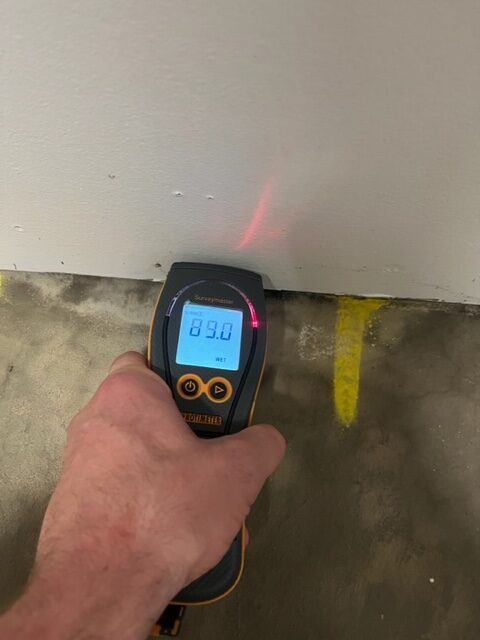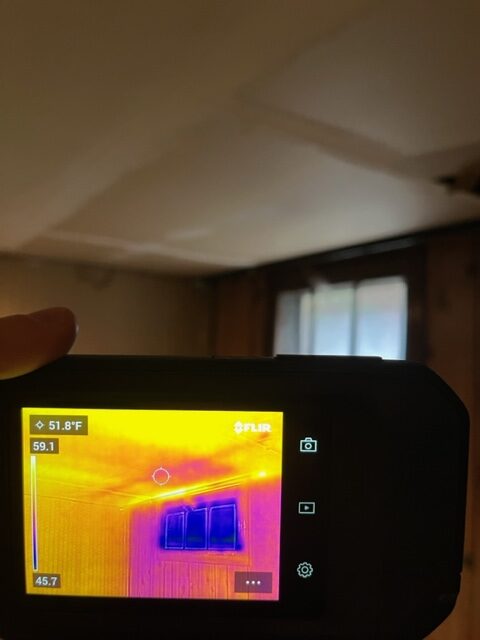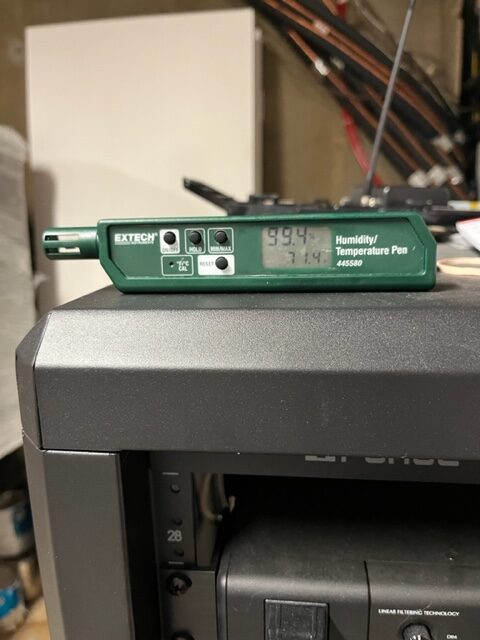Mold inspections require equipment that aids in identifying any sources of moisture. The tools used during a mold inspection vary among testing companies, but the tools below are the most common items you may notice if you decide to hire a professional mold inspector.
Roberts Environmental Corp. utilizes the latest innovative technology to perform their mold inspections. Our mission statement is to educate our clients on mold and the potential hazards and risks associated with exposure, along with providing clear and unbiased reports in a timely manner.
Moisture Meter

A Moisture Reader searches for the presence of moisture in various building materials including drywall, wood, siding, tile, insulation, and carpeting. Designed with 2 technologies in 1, it is a non-invasive meter that can find moisture with pinpoint accuracy or scan larger areas for accurate mapping
This tool is beneficial during a mold inspection. Mold requires a source of moisture in order to grow.
In this picture, the drywall is reading at ~ 89% moisture. Drywall that has not been impacted by water typically has moisture contents around 5% – 12%.
Thermal Image Camera
Thermal Image Cameras are great tools when trying to identify hidden sources of mold. The purpose of a thermal camera is to determine any temperature differences. What may not be visible to the naked eye, become very clear when thermal imaging is involved. When there is a significant change in temperature, it is considered an anomaly. All anomalies should be further investigated with a moisture meter to confirm or deny the presence of water.
In the picture, the thermal camera reveals an anomaly on the basement ceiling material. During the inspection, it was determined that there was a pipe leak from the kitchen above that required repairs and subsequent mold remediation.
During a mold inspection, it is the contractor’s duty to identify any sources of moisture that may contribute to mold growth.

Humidity/Temperature Gauge

Humidity may be the most underrated source of moisture that contributes to mold growth. A Humidity/Temperature Reader is a convenient and inexpensive device that instantaneously detect the humidity and temperature in a space.
Here on Long Island, basements are damp and musty. Mold can begin to grow in areas with humidity greater than 60%. It is recommended to utilize dehumidifiers in basements, or any area, that may experience high humidity.
In this picture, the reader is indicating the humidity level to be ~ 99%. This level of humidity is well over the threshold for mold growth.
For more information on tools used during a mold inspection, please give us call at (631) 562-8440 to discuss who we may help you!
